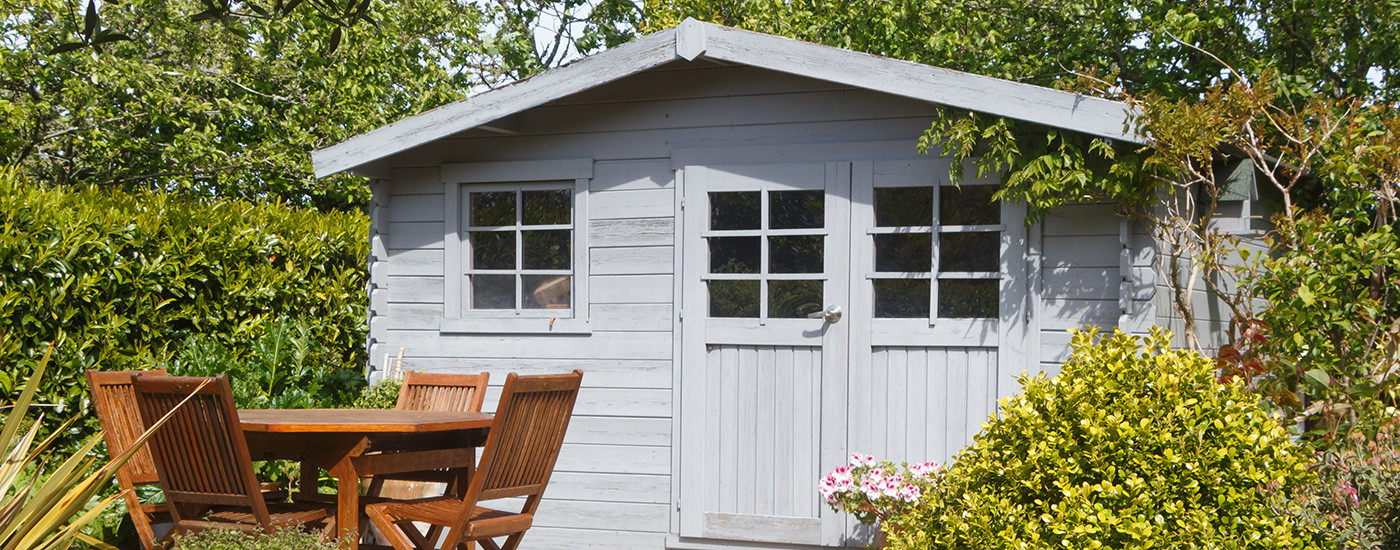How to damp proof a new wooden shed
While all new timber sheds are supplied pre-treated, the first step to ensuring it is completely damp proof is to start with its foundations when you install it. As a main cause of damp is ground moisture, erecting a shed on good foundations is vital to ensure the base is elevated and not sitting directly on the damp ground. Our blog article What foundations are needed to install a garden shed shows all the options available to you.
Applying a damp-proof coating to your new shed will protect it from day 1, and help to extend its life span. At Witham Timber we supply Protek Wood Stain and Protek Shed & Fence Wood Treatment.
Protek Wood Stain
This water-based wood stain contains a mould inhibitor and will colour and protect and give a micro-porous coating. Available in a range of colours that caters to all tastes, the wood stain will weather proof your shed with just one coat, with subsequent coats adding to the depth of the final colour.
Protek Shed and Fence Wood Treatment
Suitable for finished or rough sawn wood, Protek Shed and Fence Wood Treatment can be applied with a paint sprayer and contains wax additives to create a water-resistant finish. Offered in a selection of attractive colours, the treatment is a water based, eco-friendly creosote alternative.
How to damp proof an older wooden shed
It is easy to neglect an older shed but with a little care and attention, the damage incurred by extended exposure to all weather conditions can be put right and your shed will continue for several years to come. Regular, thorough checks of your shed will make you aware of any damp conditions as soon as they occur and these should be dealt with straightaway. Take a methodical approach to maintenance checks as follows:
Check the shed roof
Examine the roof carefully to check for any gaps or holes in the felt and to see if there are any leaks. Tears or holes in the felt should be repaired by replacing the roofing felt. Our step-by-step guide will show you exactly how to do this. Where there are leaks that are not caused by damage to the roof felt, check any guttering; it may need clearing or it may be damaged and in need of replacing.
Check shed windows and doors
Timber can shrink over time which can lead to cracks that allow water to enter the shed. The best way to minimise this risk is by regular treatment of the timber (see above). However, any gaps in window and door frames can be filled with a wood filler or expanding foam. Consider installing double-glazed windows to replace single glazing – the compressed air between the panes creates a vacuum which reduces the transfer of heat, providing insulation and protection against damp entering the shed.
Check shed walls
Treatment applied when the shed is new (see above) should be repeated annually to combat the damage from damp before it occurs. If damage has already set in, consider filling any gaps but if the damp has become widespread, it could be time to consider a new shed.
How to keep a shed damp-free
Ventilation is vital in preventing damp so make sure doors and windows are opened regularly, every few days. Where this isn’t possible, install a minimum of two air vents in opposite walls (one in each). Static vents are suitable for smaller sheds but in sheds over 12’x8’, consider a mains powered vent. All vents should be mesh backed to stop creatures entering the shed through them. Always store tools in airtight containers with silica gel, moisture-absorbing sachets. Ensure all tools are dry before storing them and avoid keeping open liquid containers in the shed.
A shed that is left unloved and uncared for will rapidly succumb to damp. By following these easy steps, you can ensure it stays warm and damp-free throughout the colder months.
For any help with this, or for any other timber related queries, please contact us on 01205 359188 or email us at sales@withamtimber.co.uk

